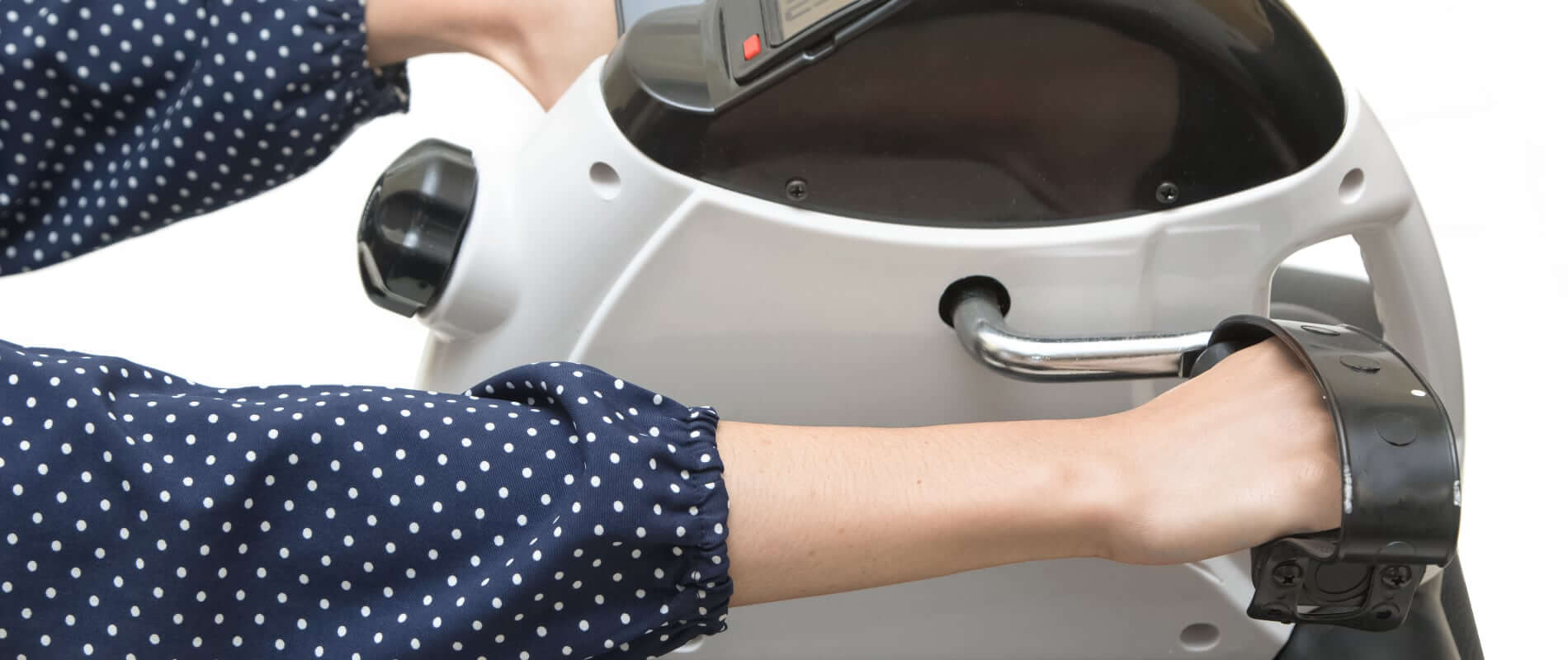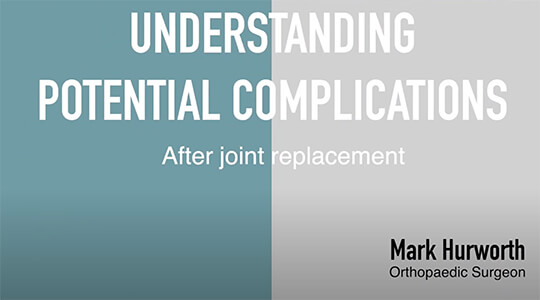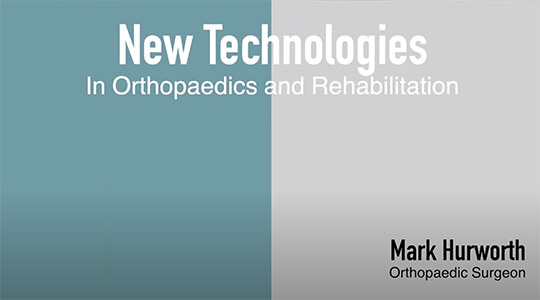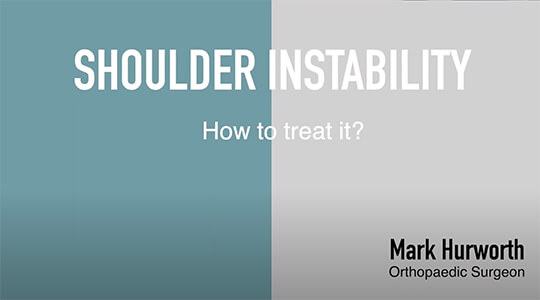Shoulder replacement Perth
Shoulder replacement
This is one of my favourite operations and core business in our practice. But when should you consider it? Below we go over all aspects of shoulder replacement surgery, including recovery and rehabilitation.

My orthopaedic practice in a nutshell
Best treatment options for shoulder arthritis
How do I know I have shoulder arthritis, and what are my options?
Many patients I see in my Perth practice have some degree of shoulder arthritis and associated pain. There are two specific types of worn out or arthritic shoulder:
- The glenohumeral joint (ball and socket) wears out – typically osteoarthritis
- The rotator cuff (tendons around the shoulder) wear out, resulting in dysfunction of the shoulder – we call this rotator cuff arthropathy
Both of the above will often result in painful stiffness of the shoulder in all directions, whereas the most common shoulder conditions we see (rotator cuff tearing etc) mainly result in pain with overhead motion.
The diagnosis can be confirmed on imaging. Generally, an X-ray and ultrasound are both necessary and should be done before you see me.
In general, shoulder symptoms can often be managed for some time without surgery, even if the joint is worn out. That is why – as your shoulder specialist – I may encourage you to wait and exhaust non-surgical management before considering shoulder replacement.
If non-surgical treatment options don’t work, we will discuss surgery and you can count on my team’s experience to make sure we get the best possible outcomes.
Shoulder replacements are relatively common, but not as common as knee or hip replacements. They account for about 5-10% of all joint replacements – the shoulder is the third most commonly replaced joint, after knee and hip.
The introduction of reverse shoulder replacements in the last 20 years has resulted in increasing numbers of shoulder replacements being done. From the perspective of a shoulder surgeon (and patients), I think this is possibly the most revolutionary development in shoulder surgery in the last 25 years, as it solved a problem that previously had no solution ie rotator cuff arthropathy which is when the shoulder wears out because the tendons have worn out.
Shoulder replacement types
What types are there? How do I prepare?
At my practice at St John of God Murdoch Hospital in Perth, I regularly perform two types of shoulder replacement surgery:
- Anatomic replacement: This mimics the normal anatomy of the shoulder, and keeps all of the rotator cuff muscles. If there is serious damage to the rotator cuff, we use a reverse replacement.
- Reverse replacement: A reverse total shoulder replacement relies on different muscles to move your arm because the rotator cuff muscles are torn/no longer work correctly. To give power to your arm and to position it correctly, we rely on restoring the lever arm of the deltoid in particular.
Reverse replacements are more common in patients over 70 years old and about 7 in 10 procedures in Australia now follow this method.

Mr Mark Hurworth, Shoulder surgeon Perth
We do not recommend having any steroid injections within six weeks of your shoulder procedure, as it may slightly increase the risk of infection.
It is also wise to prepare your daily life for after surgery: you will not be able to drive for six weeks, so organising support is a good idea. Sleeping in a sling is a bit of a challenge, and it is worth looking at a recliner chair as a temporary solution. If you are by yourself at home, let us know – support can often be organised for you through the hospital.
Story continues below video gallery
Videos about shoulder conditions and surgeries
Avoid shoulder replacement
Can I avoid surgery?
This is always a question worth asking, especially if you are elderly and have other medical conditions. In my opinion, you shouldn’t rush into shoulder surgery unless there has been an acute injury. As with any elective (ie non-urgent) joint condition, the best approach is to first exhaust non-operative treatment before saying yes to shoulder surgery.
When we discuss the management of your shoulder pain with non-surgical treatment, there are a few proven options:
- Activity modification: Changing the way you use your shoulder joint, specifically avoiding certain things that may aggravate it such as overhead activity. This may involve common-sense measures such as bringing the washing line down lower or standing on a small stool to reduce the amount of time you have the shoulders elevated if you are a hairdresser. We have two shoulders – use the other one for a while.
- Anti-inflammatories: Using these medications to control and manage the inflammation and associated pain.
- Sleep: Often sleep interruption is a significant problem with shoulders. Again, a simple analgesia before going to bed, changing your sleeping arrangements/pillows etc may be worth trying and may result in your symptoms becoming more manageable.
- Exercise: Keeping the shoulder moving while managing the pain is essential. Having a cycling-type type machine rigged up at below shoulder height can be quite useful. Our limbs are made for movement, and if we stop using them, invariably things get worse, not better as we end up with stiffness and loss of muscle.
- Injections: In many cases, injections can be used to treat the source of pain. Often this will have been already arranged by your GP prior to seeing me.

Mr Mark Hurworth, Shoulder surgeon Perth
“As much as I believe that we should first look at alternatives, at some point shoulder replacement surgery might be the best option, and this is one of my favourites for the simple reason that it makes a big difference to my patients, relieving pain and restoring function.”
We will also sometimes recommend using an arthroscopy procedure to alleviate your symptoms – often this smaller type of procedure can have quite dramatic positive effects, especially if there is biceps pathology.
It is important to put things in context when talking about non-surgical options – generally for older patients, reverse shoulder replacement has revolutionised management by providing rapid relief of pain, improved function, and relatively quick rehabilitation time.

Risks shoulder replacement
What are the risks and possible complications?
We will work together to minimise the risk of complications. With any joint condition, your general health matters:
- Diet: Obesity increases the risks of infection, wound problems and DVT.
- Fitness: The fitter you are, the lower your chance of complications and the quicker your recovery.
- Dentition: You will need to have any dental issues resolved before implant surgery (decay etc).
We will discuss the general risks of surgery and the specific ones linked to shoulder replacement procedures:
- Infection: 1 in 200
- Remember that with implant surgery, infection can be a devastating complication, resulting in multiple operations and hospital visits.
- Dislocation: 1 in 100.
- Fracture: 1 in 100.
- Neurological injury: 1 in 3,000. This can be a devastating complication and you need to be aware of it.
- Stiffness: generally depends on how stiff you are to start with
Tendon failure is a possible complication specific to anatomic replacements. It most often means that your subscapularis tendon fails after surgery. In this case, you would need reconstruction or a revision procedure to a reverse replacement. Implant survival (the time your shoulder implant lasts) is generally as good as with other joint replacements such as hip replacement or knee replacement.
Recovering from shoulder replacement
What is the recovery time after shoulder replacement surgery?
I repeat this to all my Perth patients: movement is essential. In the case of shoulder replacement surgery, your best way to prepare is to exercise in whatever way you can. Ask me about my favourite exercise technique.
After your surgery, you will be wearing a sling to allow your shoulder to heal, and that obviously means you will not be using your muscles.

Mr Mark Hurworth, Shoulder surgeon Perth
“We know that unused muscles waste away, and that surgery initially makes this process worse, so the more you build up your muscles prior to surgery, the better.”
You will typically stay in hospital for one night after your surgery. With an anatomic shoulder replacement, you wear a sling for six weeks and with reverse shoulder replacements, it tends to be shorter. In general, I will ask you not to drive a vehicle for six weeks.
Again, think ahead – arrange support if you live alone. Think about sleeping arrangements in a sling after surgery – often it is worth investing in a good recliner chair that allows you to sleep with a sling on.
Recovery times in shoulder replacement surgery have evolved, particularly now that we have introduced reverse shoulder replacement. Especially in the elderly, it means that we look at shorter recovery times and less interruption to your daily activities.


